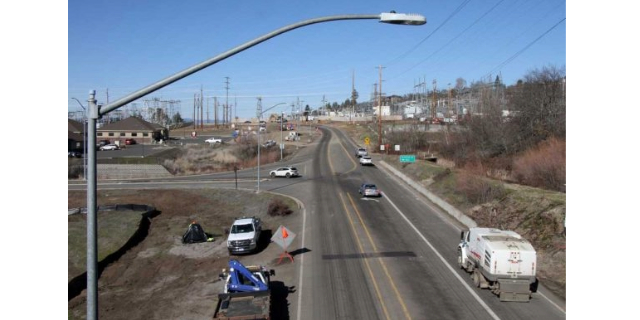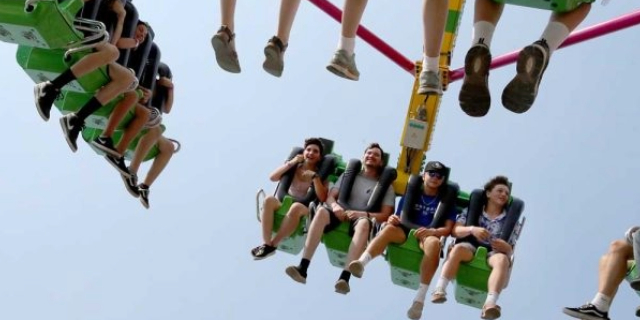A good run: Mt. Ashland had solid, though shorter, winter season
Published 1:00 pm Sunday, April 21, 2024

- Families and friends arrive at Mt. Ashland Ski Area in March.
Mt. Ashland hosted 95,944 skiers and riders this year despite having only two-thirds of the operating days compared to a normal season. The nonprofit’s last day of winter operations was April 14.
Trending
The ski area set an all-time record in 2022-23 with 128,626 snow sports enthusiasts over 93 days, also a record. This year, with only 60 operating days, the mountain still brought in 74% of the previous number. Sufficient snow to open didn’t arrive until Jan. 11.
“We just continue to see more families, more little kids; especially as we have focused on that area,” said Andrew Gast, Mt. Ashland’s general manager.
Last year, an enclosed magic carpet lift was installed to make learning easier for first-timers.
Trending
More skiers appear to be arriving earlier in the day and staying longer, Gast said. Although conjecture, he said that might be due to families having tried the sport in previous years for shorter times and deciding to make it a regular part of their winter activities, upping their time on the slopes.
Despite missing the holiday period’s usual heavy attendance, winter season revenue was down only 15% compared to last year, Gast said, adding that Mt. Ashland will finish in the black with revenue exceeding expense for the winter season.
Some adjustments to deal with the lack of snow in December and early January were made. Most seasons usually have 85 to 90 operating days, Gast said. Over the 60 years the mountain has operated, average attendance has been 71,000, meaning this year’s attendance exceeded the average by 34%.
Figures from other recent years included 106,033 in 2020-21 and just over 93,000 guests in 2021-22, a low snow year that saw the mountain close during March.
A return of Saturday night skiing after a number of years’ absence increased overall nighttime activity to over 16,000 for 19 evenings, up from 10,022 over 18 nights last season, when it was only offered on Thursdays and Fridays. Several evenings of night skiing were canceled due to weather this season.
The extra night gives the community more time to get up to the mountain on what is a non-work day for many people, said Abigail Coombs, marketing specialist for the resort.
An events coordinator was added to the staff this year and increased the number of offerings, Coombs reported.
“That brought events to the mountain that we haven’t had in quite a long time,” Coombs said. The return of a rail jam — a freestyle competition for skiers and snowboarders — was enjoyed by participants and spectators during a night session.
Closing of winter sports operations doesn’t mean the end of activities at the resort. Expanded summer offerings will build on a program started last year and several major construction projects and other work will take place, including the installation of the first new lift in nearly 40 years.
Mt. Ashland’s summer program will expand to include Friday openings of the lodge, as well as the previous Saturdays and Sundays. The lodge will be open for meal service starting Father’s Day weekend in June. It can serve as a base for hikes and other activities.
Planned activities include Youth Alpine Adventure camps, guided hikes, group runs and rides, movie nights and other gatherings. Activities for youth will be increased with four week-long day programs, while groups also can book adventures.
Disc golf, which was popular last year, will return in a new location, as the previous course was located partially where the new lift will be installed.
The inclusion of several fall activities will move the resort closer to full-year operation. There will be Oktoberfest celebrations held on weekends in late September. In October, a “haunted” ski area event will take place.
The expanded summer program is offering more employment for winter staff, Gast said. Kitchen staff from the winter will be working during the summer and several snow sports staff members will work in summer youth programs.
A contractor is already on site to begin planning for installation of the new Lithia lift that will offer expanded beginner and intermediate terrain. The three-seat lift will run in the same area as a surface Poma lift that was removed in the 1980s.
The new lift should be ready for operation when the area reopens for the 2024-25 winter season, Gast said. Lighting for night skiing will probably not occur in the first year, but is in the plans.
Widening of the Aisle Two run will also benefit new and intermediate skiers who must use it to access two lifts that offer more advanced terrain. The current aisle is narrow in spots.
A previous plan to widen the aisle using retaining walls has been dropped in favor of a more environmentally sustainable plan that allows for less work and less cost, Gast said.
After the work is done, the aisle will be double its current width at the narrowest point and will also have a more gradual slope to aid snowboarders.
A youth snow sport dome will be erected near the magic carpet and a kids’ space in the main lodge to help accommodate ski school and racing programs.
“It will help loosen up space inside the lodge for other things and to make things more efficient,” Gast said.
There has been little growth in the after-school ski program and in lessons as these programs have been near capacity for several years, he said.
Also on the project list is moving the rope tow formerly used on the beginner slope to the terrain park at the bottom of the Tempest Run. The tow will let those using the park make more laps as they won’t need to do a ride on the Windsor lift. Installation is awaiting U.S. Forest Service approval.
Most of the planned work will need to wait until the snow has melted. Overall, the area received 215 inches during the winter season.









